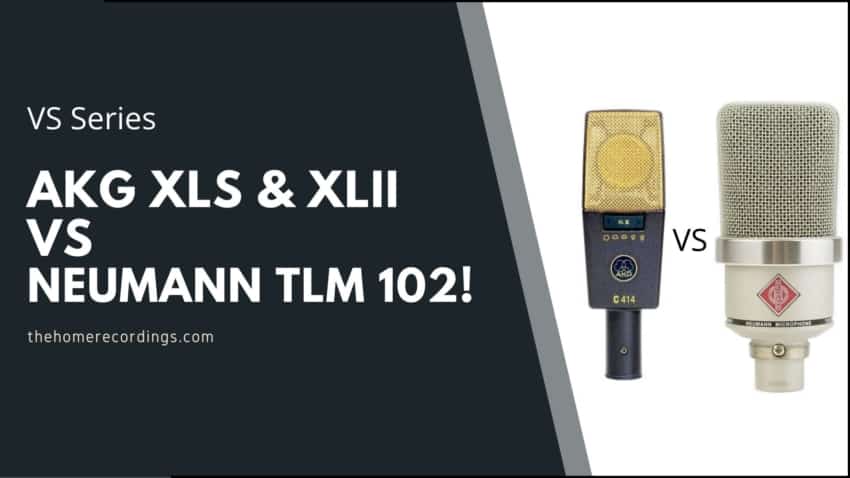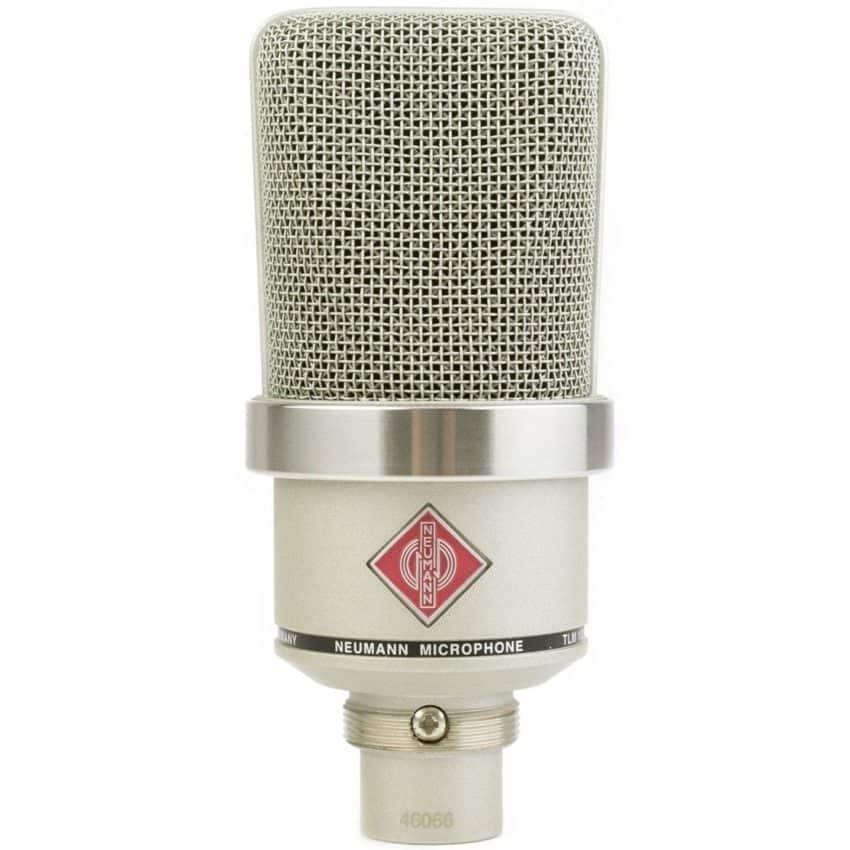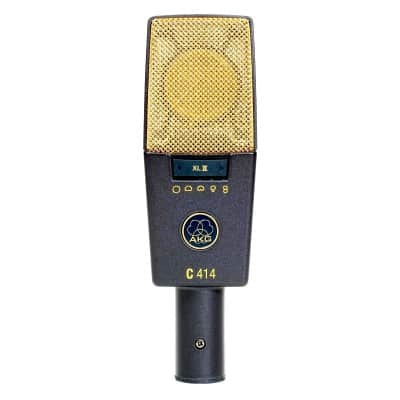Last updated on December 29th, 2023 at 09:56 pm
The Neumann TLM 102 and the AKG c414 have been some of the go-to high-end microphones in the recording industry for years now and you will certainly find a couple of them in every professional studio, and by that I mean high-end studios.
In this article, I will go over the differences between these two microphones, how they perform, their overall features, and which one you should get depending on your needs.
So, without any further ado, let’s get started!
Neumann TLM 102 vs AKG c414
Both are Large Diaphragm condenser microphones, but the Neumann TLM 102 only features a cardioid polar pattern and no PAD or High pass filter, while the AKG C414 XLS and XLII feature 9 polar patterns, from cardioid, bi-directional, omni-, to hypercardioid, and more, as well as a PAD and a high pass filter.
Now, let’s get into the specifics, starting with the Neumann!
Neumann TLM 102
The TLM 102 was unveiled by Neumann back in 2009 with the intention of providing a professional studio quality microphone with a compact size and an “affordable” price. It was designed with a plethora of sound sources in mind: Vocals, acoustic guitar, electric guitar, and drums have all been known to get the 102 treatment.
The TLM 102 is a large diaphragm condenser microphone with a cardioid polar pattern. The packaging of this mic is by far its least professional aspect. It’s a cardboard box with just some foam protection on the inside, at least a hard plastic case would have been nice seeing as it costs more than half a G!
It’s been said everywhere, and you won’t find an exception here; this thing is small! it’s not until it’s in your hands that you realize that this is just a lovely little egg of audio. Even with its compact size there is a nice weight to it, it does not feel flimsy in the slightest.
Its metallic body and grille are sturdy and available in a black or nickel finish. It requires 48V phantom power to be sent to it through its XLR connection. It comes with a built-in pop filter to help you keep those pesky plosives at bay.
The TLM 102 does not feature an on/off switch, attenuation pads, or low and high-cut filters. Neumann feel they have offered enough with the sound of the mic to cut back on the bells and whistles featured on their pricier models such as the U87.
How does it sound?
Neumann’s TLM 102 adds a perfect amount of charming brightness to its comprehensive picture.
Its frequency response features a gentle climb from 20Hz to 100Hz, leaving a pleasant but relaxed low end.
Its mid-range is somewhat overlooked when people discuss the TLM 102. It plays a crucial role, giving a clear cut and precisely flat image of the vibrations you are vacuuming up.
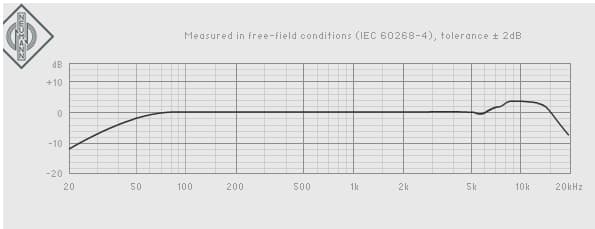
The TLM 102’s stand-out aspect is its top end. It features a gentle roller coaster peak that begins in the presence range, climbs up to 10kHz to take in the view, then recedes gently downhill on the way to 20kHz. It offers so much sparkle without ever sounding overly enthusiastic.
Neumann’s TLM 102 sounds exceptional on an acoustic guitar, it really helps the shine of your strumming and picking attack come to the surface.
On an electric guitar amp, it has a delightful crispiness to it. The TLM 102 can handle sound pressure levels of up to 144 dB, so you can really crank your Marshall JCM and let loose!
As an overhead pair, it offers you both a lovely cymbal sizzle and a noble reinforcement of your kick, toms, and snare.
It’s also more than adequate for piano recordings, although with a tendency to bring out too much hammer attack.
The evenness of the TLM 102’s midrange and the lovely cordial glow of its top-end makes it ideal for professional sounding dialogue recording.
Although Neumann’s TLM 102 sounds great on all these sources, singers are the people who will appreciate this mic the most. It offers a flattering clarity that could take your bedroom studio belting to the big league.
Just remember that this microphone costs way more than other great large diaphragm condenser mics, such as the Rode NT1A or the AT2020, but the differences are actually noticeable.
What comes in the box?
- Neumann TLM 102 microphone
- SG 2 stand mount
- Manual
Specifications
| Microphone Type | Large diaphragm condenser |
| Polar Pattern | Cardioid |
| Frequency Response | 20Hz-20kHz |
| Output Impedance | 50Ω |
| Maximum SPL | 144dBSPL |
| Sensitivity | 11mV/Pa |
| Self-Noise | 12 Db-A |
Find out more about the Neumann TLM 102 here:
- Neumann TLM 102: Amazon, Sweetwater.
AKG C414
The original C414 was released way back in 1971 and has since gone through numerous revamps and reconstructions, leading to slight variations in flavor depending on what era you scooped it up in.
On the market today you will find two models available with a slight difference in frequency response, the XLS and the XLII. Versatile is the label AKG have chosen to stamp on the C414, it’s a multi-polar pattern mic designed for a wide range of sources such as acoustic guitar, vocals, woodwinds, and piano.
AKG’s C414 is a large diaphragm condenser microphone which offers 9 changeable pickup patterns for you to choose from; Cardioid, hypercardioid, wide cardioid, figure of eight, omnidirectional, and 4 in-between patterns are all made available to you, so you can really explore every nook and cranny of the sound-sphere.
AKG deliver this microphone to you in a businesslike silver hard case.
The C414’s body is smart looking with a black finish and has a prominent base where its XLR connection is housed. The front grille of the XLS is silver, the XLII’s is golden, and both feature a dark gray back grille. Although the body of the C414 is sturdy, the grille is anything but, one bad drop and your capsule could be gone kaput.
The front of the body features the polar pattern switch with LEDs to indicate which one is currently in play. These LEDs also work double-time as peak overload indicators.
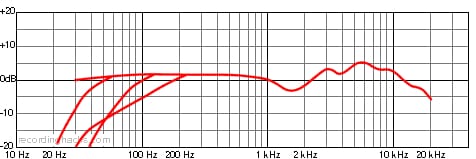
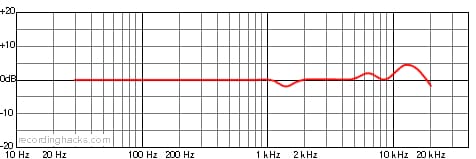
The back of the body features an attenuation pad which can be switched between -6, -12, and -18 dB. It also features a low-cut filter, with the choices of frequencies below 40Hz, 80Hz, or 160Hz to be rolled off.
The C414 comes with 3 extra goodies for you to treat your mic to, a H85 shock mount, PF80 pop filter, and W414 foam windscreen are all made complimentary by AKG.
How does it sound?
Being a microphone that is available in the form of two different models with 9 polar patterns to choose from, the sound can vary a bit, but in general the C414 gives you a frank and flat image.
From the low end up to the mids, the C414’s response is as flat as a pancake and offers a very disrobed and transparent sound.
The XLS is based on the C414 B-ULS model, it retains an air of flatness throughout the upper-mids giving it a darker vibe.
The XLII on the other hand was created in the vein of the iconic C12 capsule, offering a boost in the presence frequency range up around 6kHz.
This trend continues up in the high-end, with the XLII offering a nice bit of glimmer and glitter while the XLS stays calm and collected.
On an acoustic guitar the C414’s midrange restraint offers up a nice mellow and woody mood, its highs on the other hand are not for everybody. The XLS tends to sound dull, while the XLII is in attendance but flimsy.
On an electric guitar amp, the XLS sounds especially nice on clean tone chords and the XLII is impressive with distorted pick pummeling leads.
For overheads, the XLII is the model of the C414 that should receive the call of duty, it has a liveliness that any tub-thumping Ringo will appreciate.
The AKG C414 sounds excellent on a piano, it has a controlled glossiness to it that would be appropriate for countless styles of mixes.
Those involved in dialogue recording should give the C414 a try, it has a relaxed mid-range that suits a variety of different voices.
For singers, the C414 can offer up a dimly lit and gorgeously moody impression. It also is ideal for rap vocals, its dark mids are perfect for producers looking for a grimy 90s east coast vibe.
What comes in the box?
- AKG C414 microphone
- PF80 pop filter
- W414 windscreen
- H85 universal shock mount
- Metal carry case
- Carry pouch
Specifications
| Microphone Type | Large diaphragm condenser |
| Polar Pattern | Cardioid, hypercardioid, wide cardioid, figure of eight, omnidirectional |
| Frequency Response | 20Hz-20kHz |
| Output Impedance | 200Ω |
| Maximum SPL | 140dBSPL |
| Sensitivity | 23mV/Pa |
| Self-Noise | 6 Db-A |
Find out more about the AKG C414 XLS and XLII here.
- AKG C414 XLS: Amazon, Sweetwater.
- AKG C414 XLII: Amazon, Sweetwater.
Which one should you choose?
It’s the age-old tale of darkness vs light, the ligneous restraint of a C414 vs the eager shine of the TLM 102, there can only be one!
For acoustic guitars, many people would choose the TLM 102 for its high-end sparkle, but personally I find the low-key translucent vibe of the C414 to be perfect for an acoustic in a busy mix.
The TLM 102 sounds incredible on an electric guitar amp, it just offers a crispiness the C414 can’t compete with.
For piano recordings, I prefer the C414 as it offers a polished and delicate touch, while the TLM 102 offers a bit too much bite in the brilliance band.
I would reach for a pair of TLM 102’s if I needed some overheads that were glittery but grounded, the XLS is too dull and the XLII has a fragile presence.
In my opinion, the TLM 102 would suit more peoples voices for dialogue recordings, due to its warm and balanced mids combined with its dollop of brightness in the highs.
For singers I am slightly edging more towards the TLM 102, as it is more reliable and adds more of a pleasant embellishment to vocals. The C414 sounds incredible too, but at times can offer too much of a bare and plain response.
And the overall winner is…. (drumroll please) the Neumann TLM 102!
Although the C414 offers an incredible amount of polar pattern flexibility, it ends up getting overtaken by the TLM 102’s powerfully smooth engine-like midrange and its winsomely illuminating top-end.
So, in the end, despite all AKG’s steady steering they were simply no match for Neumann’s genius German engineering!
Conclusion
In general, I prefer reaching for a microphone that does one thing and one thing only, which in this case would be the Neumann TLM 102.
The AKG could be considered a jack of all trades, but to be honest, we mostly use the cardioid polar pattern when recording and the Neumann just outperforms in this regard.
I hope this information was useful!
Have a fantastic day!
